
Cyprinidae is a family of freshwater fish commonly called the carp or minnow family. It includes the carps, the true minnows, and relatives like the barbs and barbels. Cyprinidae is the largest and most diverse fish family and the largest vertebrate animal family in general with about 3,000 species, of which only 1,270 remain extant, divided into about 370 genera. Cyprinids range from about 12 mm in size to the 3 m giant barb. By genus and species count, the family makes up more than two-thirds of the ostariophysian order Cypriniformes. The family name is derived from the Greek word kyprînos.
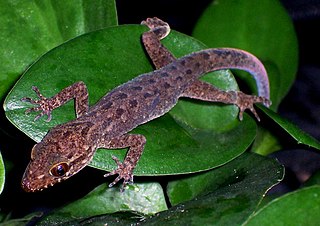
Cyrtodactylus is a diverse genus of Asian geckos, commonly known as bent-toed geckos, bow-fingered geckos, and forest geckos. The genus has at least 300 described species as of 2020, which makes it the largest of all gecko genera.
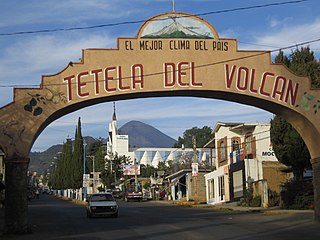
Tetela del Volcán or simply Tetela, is a town and municipal seat of the municipality of Tetela del Volcán in the Mexican state of Morelos. It is located on the slopes of the volcano Popocatépetl. 18°57′48″N99°15′12″W. The city serves as the municipal seat for the surrounding municipality of the same name. It is notable for its sixteenth century Dominican ex-convent which together with a number of other early monasteries nearby in the area has been declared a UNESCO World Heritage Site. The municipality reported 20,698 inhabitants in the year 2015 census. Other towns in the municipality of Tetela del Volcán include Hueyapan, Xochicalco and Tlamimilulpan.

Limnonectes is a genus of fork-tongued frogs of about 75 known species, but new ones are still being described occasionally. They are collectively known as fanged frogs because they tend to have unusually large teeth, which are small or absent in other frogs.
Tetela, also Sungu, is a Bantu language of northern Kasai-Oriental Province, Democratic Republic of the Congo. It is spoken by the Tetela people.
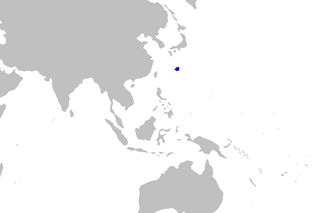
The rasptooth dogfish is a dogfish, found on the Kyushu–Palau Ridge in the northwest Pacific Ocean at depths of 360 m. Its maximum length is unknown. This species was originally described as Centroscyllium sheikoi, and subsequently allocated to the newly named genus Miroscyllium based on anatomical features not shared with other Centroscyllium. More recent molecular data suggest this species belongs to the genus Etmopterus, but as of June 2014 Miroscyllium sheikoi remains the valid name recognized by FishBase, the Catalog of Fishes World Register of Marine Species, and the IUCN
Hylomyscus is a genus of rodent in the family Muridae endemic to Africa.
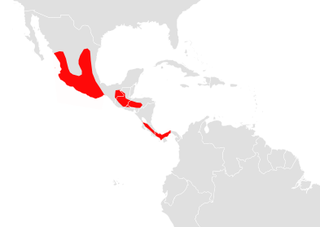
The Aztec fruit-eating bat is a species of bat in the family Phyllostomidae. It is found in Costa Rica, El Salvador, Guatemala, Honduras, Mexico, and Panama.

Modulidae, common name modulids, is a family of small sea snails, marine gastropod molluscs in the superfamily Cerithioidea.
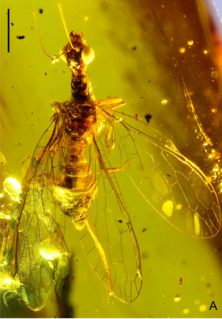
Nanoraphidia is an extinct genus of snakefly in the family Mesoraphidiidae containing the species Nanoraphidia electroburmica and Nanoraphidia lithographica.
Eremobiotus is a genus of tardigrade in the class Eutardigrada.

The Batetela rebellion was a series of three military mutinies and a subsequent low-level insurgency which was attributed to members of the Tetela ethnic group in the Congo Free State between 1895 and 1908. Beginning in a mutiny among the troops the Force Publique of Luluabourg in January 1895, the revolt sparked an prolonged insurgency and two further mutinies elsewhere in the Congo. The rebellion was one of the most important anti-colonial rebellions in the history of the Congo and the last Tetela rebels were only defeated in 1901.

Raphitomidae is a family of small to medium-sized sea snails, marine gastropod mollusks in the superfamily Conoidea.
Miotadorna is a genus of extinct tadornine ducks from the Miocene of New Zealand. It contains two species, M. sanctibathansi, and M. catrionae.
Walter Verheyen's mouse is a species of rodent of the genus Hylomyscus that is found in the Central African lowland and mountain forests.

Aphelochaeta guimondi is a species of bitentaculate cirratulidan first found in the Pacific coast of Costa Rica, at a shallow subtidal depth of about 11 to 26 metres in the Gulf of Nicoya. It is characterised by possessing a wide dorsal trough in its thorax and hirsute capillaries.

Aphelochaeta zebra is a species of bitentaculate cirratulidan first found in the Pacific coast of Costa Rica, at a coral reef in Golfo Dulce. It is characterised by possessing an expanded posterior end and by its darkly-staining intersegmental regions.
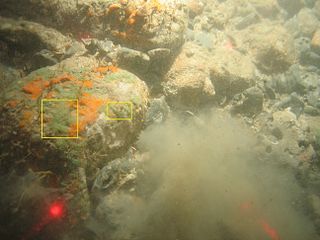
Hymedesmiidae is a family of demosponges in the order Poecilosclerida.
Claudio Gilberto Froehlich is a Brazilian zoologist.

Conomodulus is a small genus of sea snails representing one extinct and one extant species. This genus of snails was first formally named in 2014 by Bernard Landau, Geerat J. Vermeij, and Sonja Reich. The name Conomodulus refers to the conical spire and familial name, Modulidae.













